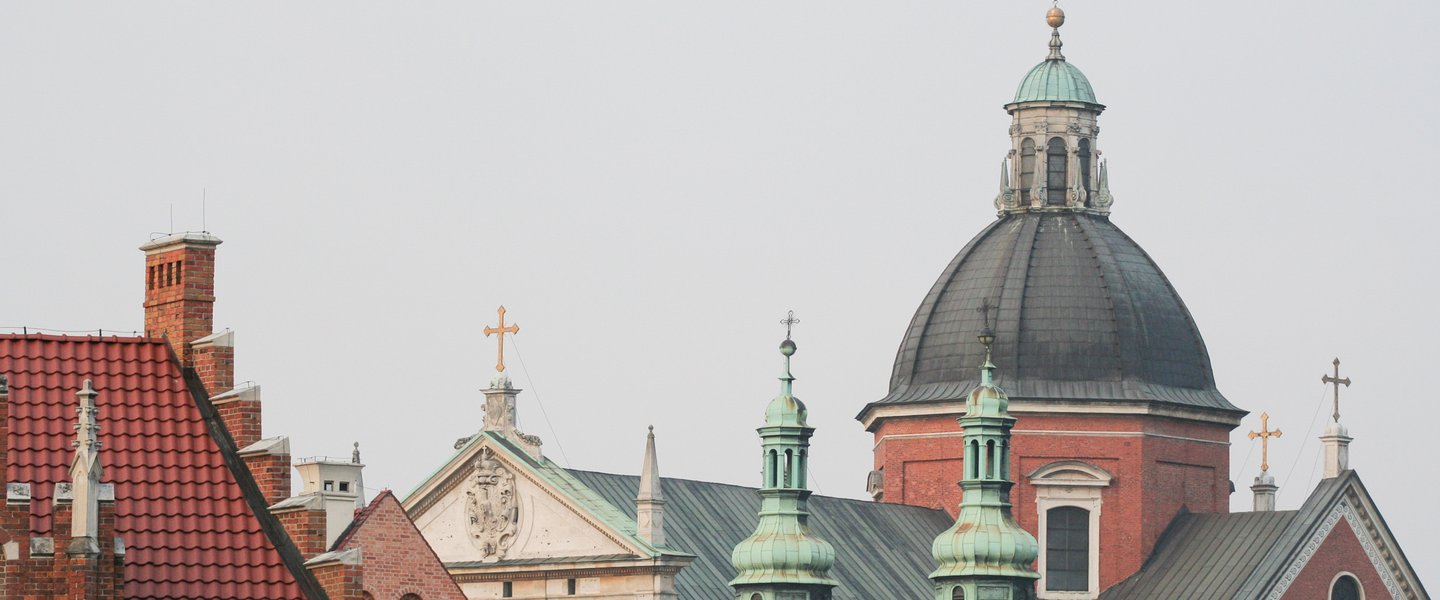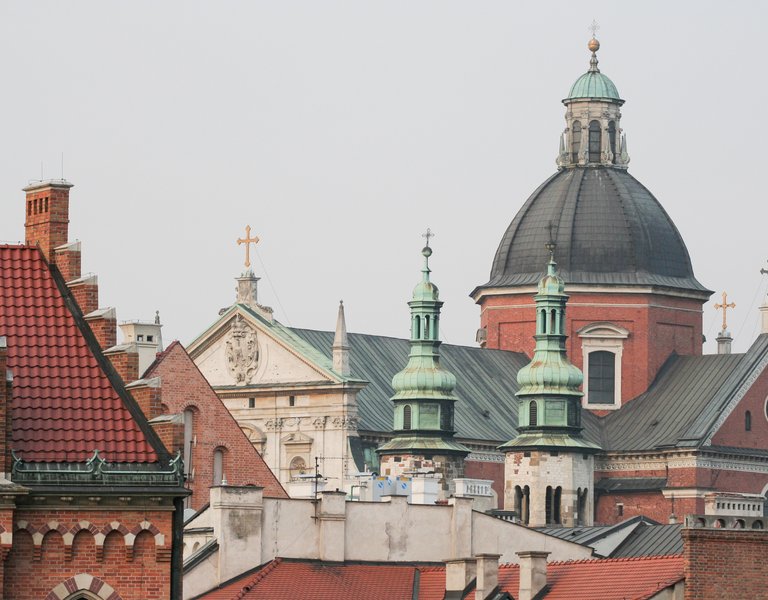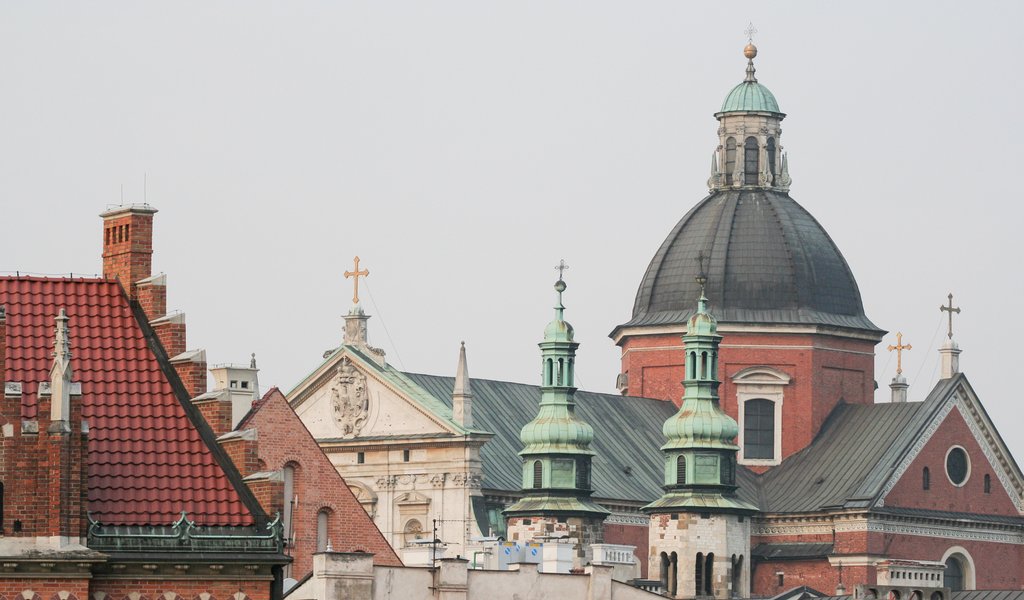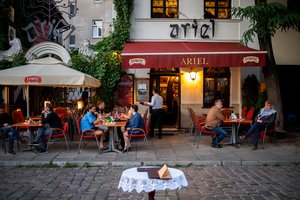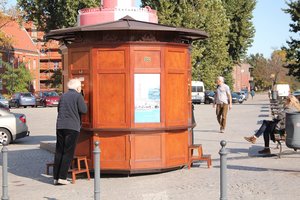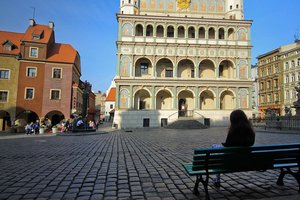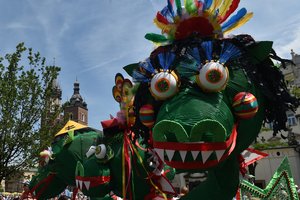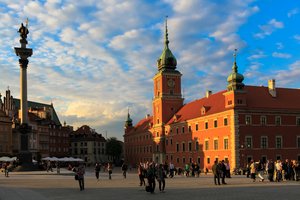Cracow’s most beautiful churches
Cracow’s tourist season this year will coincide with World Youth Day, which will take place between 26 and 31 July. Numerous churches of different architectural styles all around Cracow invite visitors to admire their invaluable pieces of arts - a source of not only spiritual, but also aesthetic delight.
As announced by the Organizational Committee of the World Youth Day, around 1.6-1.8 million people are expected to visit Cracow to meet Pope Francis (according to the latest report as of the end of April 2016, almost 600,000 pilgrims from 181 countries, in particular Poland, Italy, France and Spain, registered their participation on the online registration system). It is hard to imagine a better place to stage a rally of young Catholics. The capital city of Lesser Poland is a thriving centre of pilgrim tourism, as well as a Polish city hosting the largest number of museums and monuments. Numerous churches of different architectural styles (there are approx. 70 of them built before the 20th century) invite visitors to admire invaluable pieces of arts - a source of not only spiritual, but also aesthetic delight.
First churches - the church of St Salvatore and the church on the Wawel Hill were constructed as early as in the 10th century. The most precious churches include: the Wawel Cathedral, the Romanesque Church of St Andrew, the Gothic Church of the Franciscans, the Church of the Holy Cross, the Church of the Dominican with late Renaissance and Baroque chapels, the Church of the Augustinians, the Church of the Lateran Canons, the Church of St Mary with the famous altar of Wit Stwosz, as well as the Baroque Church of St Peter and Paul, the Camaldolese Monastry in Bielany, the Church of the Bernardines, the Church of St Anna, the Church of the Missionaries, the Church of the Piarist Order with a rococo facade, the Church of the Pauline Monastery at Skałka and the Church of the Trinitarians. We would like to present to you the churches that must be visited.
Wawel Cathedral
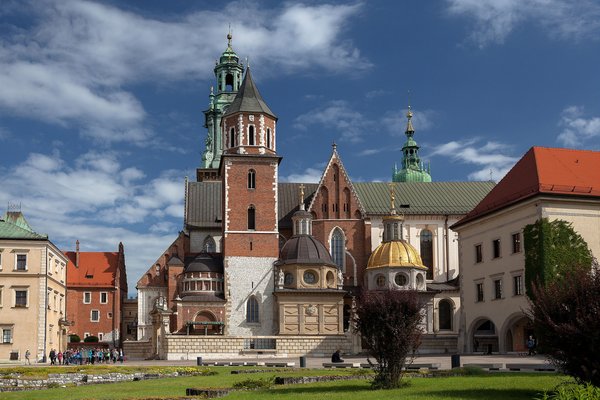 This is the most important sanctuary in Poland. Almost all Polish kings had their coronation ceremonies held here, the first being Władysław the Short in 1320. Royal weddings, baptisms and funeral ceremonies were celebrated before the high altar, while many monarchs were buried in burial chambers under the floor. The Cathedral is also a place of worship and is where St Stanislaus is buried. The grave of the martyr is the so-called Ara Patriae, i.e. the Altar of the Homeland, where kings offered their war trophies.
This is the most important sanctuary in Poland. Almost all Polish kings had their coronation ceremonies held here, the first being Władysław the Short in 1320. Royal weddings, baptisms and funeral ceremonies were celebrated before the high altar, while many monarchs were buried in burial chambers under the floor. The Cathedral is also a place of worship and is where St Stanislaus is buried. The grave of the martyr is the so-called Ara Patriae, i.e. the Altar of the Homeland, where kings offered their war trophies.
The first church on Wawel Hill was constructed in 1000 AD upon the foundation of the Cracow Bishopric. In the 14th century, the Romanesque building was replaced by a Gothic three-nave basilica with a transept that has been preserved to this day almost without changes. Over the centuries, the interior of the church underwent many changes and there are overlapping layers of successive styles visible today: Gothic, Renaissance, Baroque, Classicism and Art Nouveau.
In the 16th century, the interior of the church was rebuilt by Italian artists who had settled in Cracow in the spirit of the Renaissance (inter alia Francesco Fiorentino, Bartolomeo Berrecci, Giovanni Maria Padovano, Santi Gucci). In the years 1519-33, King Sigismund I the Old ordered Italian architects directed by Bartolomeo Berrecci to build the Sigismund Chapel – one of the greatest works of the Tuscan Renaissance in Central Europe. The Chapel houses the tombs of Sigismund I the Old, Sigismund I Augustus and Anna Jagiellonka, as well as a pentaptych altar with painted scenes on the outer sides and silver carved reliefs on the inside. Its walls are richly decorated with sculptures. The interior was given a Baroque style during the course of transformations that took place over the centuries. After Poland lost its independence in 1795, the Cathedral became a destination for patriot pilgrimages. The Wawel Cathedral has served as the Polish Pantheon since the burial of national heroes fighting for Polish independence – among those buried here are Tadeusz Kościuszko and Józef Poniatowski, as well as Adam Mickiewicz, the prominent Romantic poet and the spiritual leader of the nation. In the 20th century, the remains of the Romantic poet Juliusz Słowacki, Marshal Józef Piłsudski and General Władysław Sikorski, Prime Minister of the Polish government in exile during the Second World War, were buried in the Cathedral’s vaults, as were Maria and Lech Kaczynski, the presidential couple who died in an airplane crash in Smolensk in 2010.
Church of St Andrew
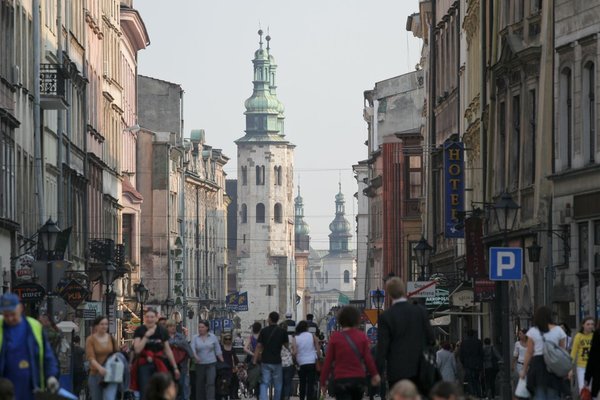 The defensive church with thick walls made of mining ashlars was erected in the 11th century. This is one of the oldest buildings in Cracow, and the best preserved example of Romanesque architecture. Its stern style contrasts with its two towers, Baroque cupolas and Baroque interior including rich stucco decoration, the polychrome, the high altar of black marble allegedly by Francesco Placidi, the boat-shaped pulpit and the rococo organ. The church adjoins the Monastery of the Sisters of St Clara founded in the 14th century. The Monastery’s treasury and library house valuable monuments including the 13th century reliquaries, the Byzantine-style unique mosaic icon of Virgin Mary from the turn of the 12th and 13th century, the 14th century nativity scene figures, as well as the early-Gothic illuminated books.
The defensive church with thick walls made of mining ashlars was erected in the 11th century. This is one of the oldest buildings in Cracow, and the best preserved example of Romanesque architecture. Its stern style contrasts with its two towers, Baroque cupolas and Baroque interior including rich stucco decoration, the polychrome, the high altar of black marble allegedly by Francesco Placidi, the boat-shaped pulpit and the rococo organ. The church adjoins the Monastery of the Sisters of St Clara founded in the 14th century. The Monastery’s treasury and library house valuable monuments including the 13th century reliquaries, the Byzantine-style unique mosaic icon of Virgin Mary from the turn of the 12th and 13th century, the 14th century nativity scene figures, as well as the early-Gothic illuminated books.
Church of St Francis
The Franciscans’ 13th century Gothic Church was one of the first brick buildings in Cracow. After the church and the adjacent monastery were burned down during the Swedish invasion (in 1655), the interior was rebuilt in Baroque style. Gothic frescos were preserved in the galleries of the monastery. The great fire of Cracow in 1850 marked another catastrophe in its history. Reconstruction work continued until the beginning of the 20th century and brought with it numerous stylistic transformations (Neo-Gothic, Pseudo-Romanesque). In the years 1895-1902, outstanding polychromes and stained-glass windows in Art Nouveau style were created by Stanisław Wyspiański, the painter, playwright, poet, scene designer and reformer of the theatre – one of the most prominent artists of Polish Modernism. The walls of the presbytery, transept and a section of the central nave were decorated with Polish flowers by Wyspiański: pastel and delicate lilies, pansies, common mulleins, forget-me-nots, dandelions, nasturtiums and sunflowers, as well as hundreds of golden stars on the place and sapphire ceiling (some of them in the form of magnified snowflakes). Figural polychromes include: “Mother of God with Child Jesus” in Cracow traditional folk clothing, “Mercy” representing two small girls in an embrace by irises (the personification of God’s love), “The Fall of the Rebel Angels”, as well as “St Michael Archangel” symbolizing the fight against evil.
The High Altar is decorated by glass windows representing the patron saint of the church - barefooted, with his face raised to the sky; Christ whose outstretched arms are marked by stigmatas; Blessed Salomea, the first Polish sister of St Clara (buried in the church), as well symbols of the elements of fire and water. The most beautiful glass window is entitled “Become!” on the western side above the organ gallery - an expressionist vision of the creation of the world with a monumental figure of God leading the world out of chaos. Fourteen pictures of the Stations of the Cross were painted by Józef Mehoffer in the years 1933-1946, one of the leading representatives of the Symbolism from the turn of centuries. The most interesting picture is entitled “Death on the Cross” (Station 12). The crucified Christ is accompanied by angels’ hosts, while the light of their candles illuminates figures standing at the foot of the cross and the way to heaven.
In the Lord's Passion Chapel, a faithful copy of the Shroud of Turin is kept in a glass sarcophagus. The Church of St Francis was one of the favourite houses of prayer of Karol Wojtyła - the Holy Father John Paul II. The bank in the central nave he used to sit in is marked with a commemorative plate.
Basilica of St Mary
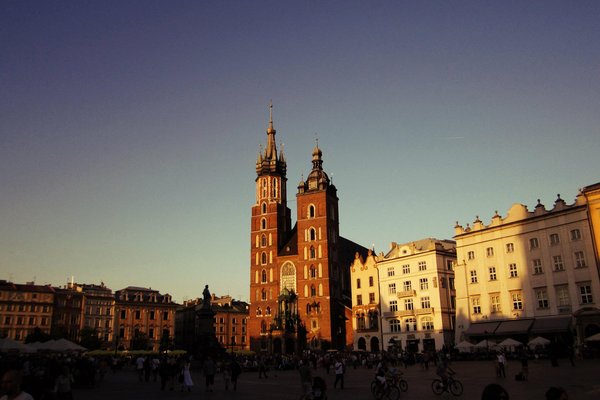 The monumental Gothic Church of the Assumption of the Holy Virgin Mary is the second, following Wawel Cathedral, most important church in Cracow. The High Altar, funded by the City Council of Cracow and built in the workshop of Wit Stwosz in the years 1477-89, is a masterpiece of sculpture and one of the largest and most precious late-Gothic altars in Europe (13 m high, 11 m wide). Transferred to Nuremberg by the Nazis, it was returned to Cracow in 1946 and placed in its original spot following a thorough renovation. Carved in lime-tree, oak and larch wood, the polychromatic and gilded pentaptych consists of the main cabin and two pairs of sides - movable and immovable ones. In the altar’s cabinet, the artist placed an expressive, extremely golden and colourful scene representing the Dormition of Mary in the arms of St James surrounded by apostles, and above this the scene of Christ assuming Her body and soul into heaven. The Coronation of Our Lady assisted by the two main Patrons of Poland – St Stanislaus and St Adalbert continues the motifs and occupies the crest of the altarpiece. The reliefs on the folding doors depict scenes from the life of Christ and Mary, including inter alia: The Annunciation, The Birth of Christ, The Homage of the Three Kings, The 12-year old Christ teaching in the temple, The Crucifixion, The Resurrection, and The Ascension. Wit Stwosz combined the sacred and the profane, mysticism with naturalism, and loftiness with mundaneness in a moving way. Mary was depicted as a classic medieval beauty, but apostles were provided with ordinary clothes worn by citizens of Cracow and features that were far from ideal. The artistry of Wit Stwosz is also brought to the fore by outstanding ornamentation. The ceiling of the Basilica is decorated with a polychrome imitating a starry sky, painted by Jan Matejko in the years 1889-1890, the most prominent representative of Polish historical painting.
The monumental Gothic Church of the Assumption of the Holy Virgin Mary is the second, following Wawel Cathedral, most important church in Cracow. The High Altar, funded by the City Council of Cracow and built in the workshop of Wit Stwosz in the years 1477-89, is a masterpiece of sculpture and one of the largest and most precious late-Gothic altars in Europe (13 m high, 11 m wide). Transferred to Nuremberg by the Nazis, it was returned to Cracow in 1946 and placed in its original spot following a thorough renovation. Carved in lime-tree, oak and larch wood, the polychromatic and gilded pentaptych consists of the main cabin and two pairs of sides - movable and immovable ones. In the altar’s cabinet, the artist placed an expressive, extremely golden and colourful scene representing the Dormition of Mary in the arms of St James surrounded by apostles, and above this the scene of Christ assuming Her body and soul into heaven. The Coronation of Our Lady assisted by the two main Patrons of Poland – St Stanislaus and St Adalbert continues the motifs and occupies the crest of the altarpiece. The reliefs on the folding doors depict scenes from the life of Christ and Mary, including inter alia: The Annunciation, The Birth of Christ, The Homage of the Three Kings, The 12-year old Christ teaching in the temple, The Crucifixion, The Resurrection, and The Ascension. Wit Stwosz combined the sacred and the profane, mysticism with naturalism, and loftiness with mundaneness in a moving way. Mary was depicted as a classic medieval beauty, but apostles were provided with ordinary clothes worn by citizens of Cracow and features that were far from ideal. The artistry of Wit Stwosz is also brought to the fore by outstanding ornamentation. The ceiling of the Basilica is decorated with a polychrome imitating a starry sky, painted by Jan Matejko in the years 1889-1890, the most prominent representative of Polish historical painting.
The facade of the Basilica is closed by two towers. The lower tower houses church bells, while the trumpet signal called “Hejnał Mariacki” is played from the higher tower every hour. Legend has it that during the invasion of Tatars in 1241 a guard playing the signal was struck with a Tatar arrow while alerting citizens of the city to a danger. To this day, the melody breaks off on an abrupt half-note.
Church of St Anna
The church dates back to the turn of the 17th and 18th century and was designed by Tylman van Gameren. It is considered to be one of the most beautiful Baroque buildings in Poland (the architect modelled it after Sant'Andrea della Valle in Rome. This is an academic church of the Jagiellonian University. Two towers topped with cupolas stand on both sides of the bright, two-floor facade. Niches house statutes of saints: St Casimir, St Florian, St Bernard of Clairvaux, and St John Cantius. A relief of the Blessed Virgin with Infant Jesus is situated above the main entrance. The whole is crowned with the Eye of Providence - the symbol of the Holy Trinity. The facade is also decorated by massive columns and mouldings.
The interior of the church is light and spacious. Painting decoration and adorable stuccowork on the ceiling were designed by Baldassare Fontana and Karol Dankwart, amongst others. The nave is decorated with six chapels, while the High Altar includes a picture representing St Anna Samotrzeć and sculptures of St Adalbert and St Stanislaus. In the right transept, there is a monumental Confession of St John Cantius, the patron of Cracow, its university - the Jagiellonian University, professors and students. A tomb with the saint’s remains is placed in the arms of four allegoric figures symbolling the faculties of the university: theology, philosophy, medicine and law. It is surrounded by four spiral columns modelled after the Confession of St Peter in Vatican, each of them crowned with a figure of a different St John. A classicist monument of Mikołaj Kopernik made out of black marble is located in the left-side transept. Poland’s first monument of the scientist dates back of the first half of the 19th century. The 17th century pulpit held by an angel, the 18th century baptismal font and numerous examples of the Baroque illusionism - paintings imitating sculptures are additional reasons to visit to the church.
Nelly Kamińska
20.07.2016
